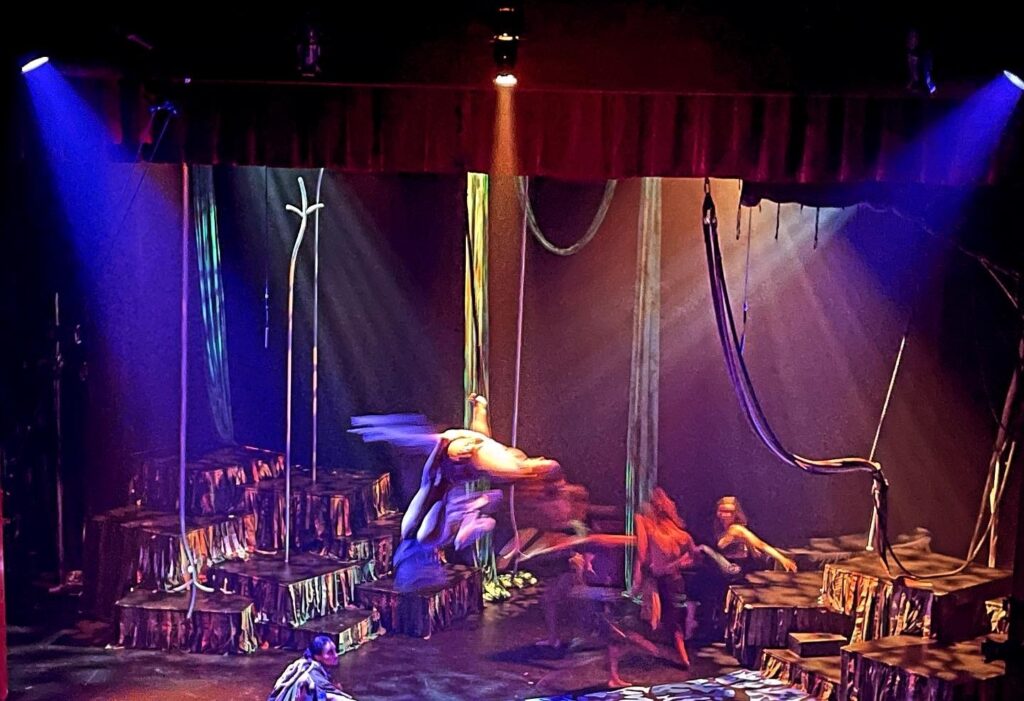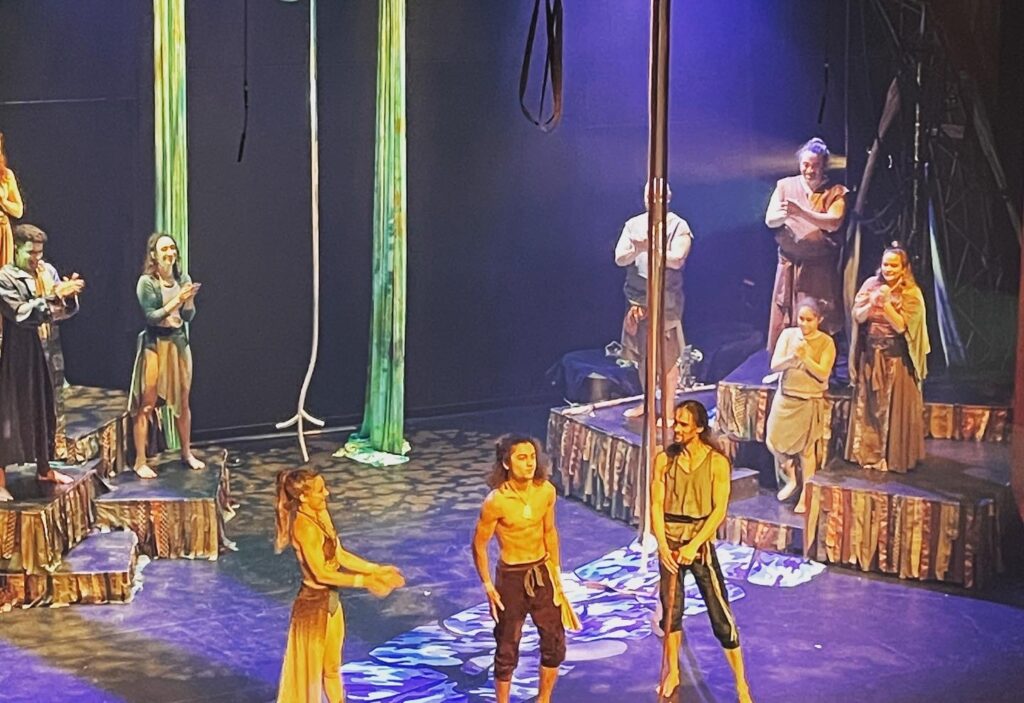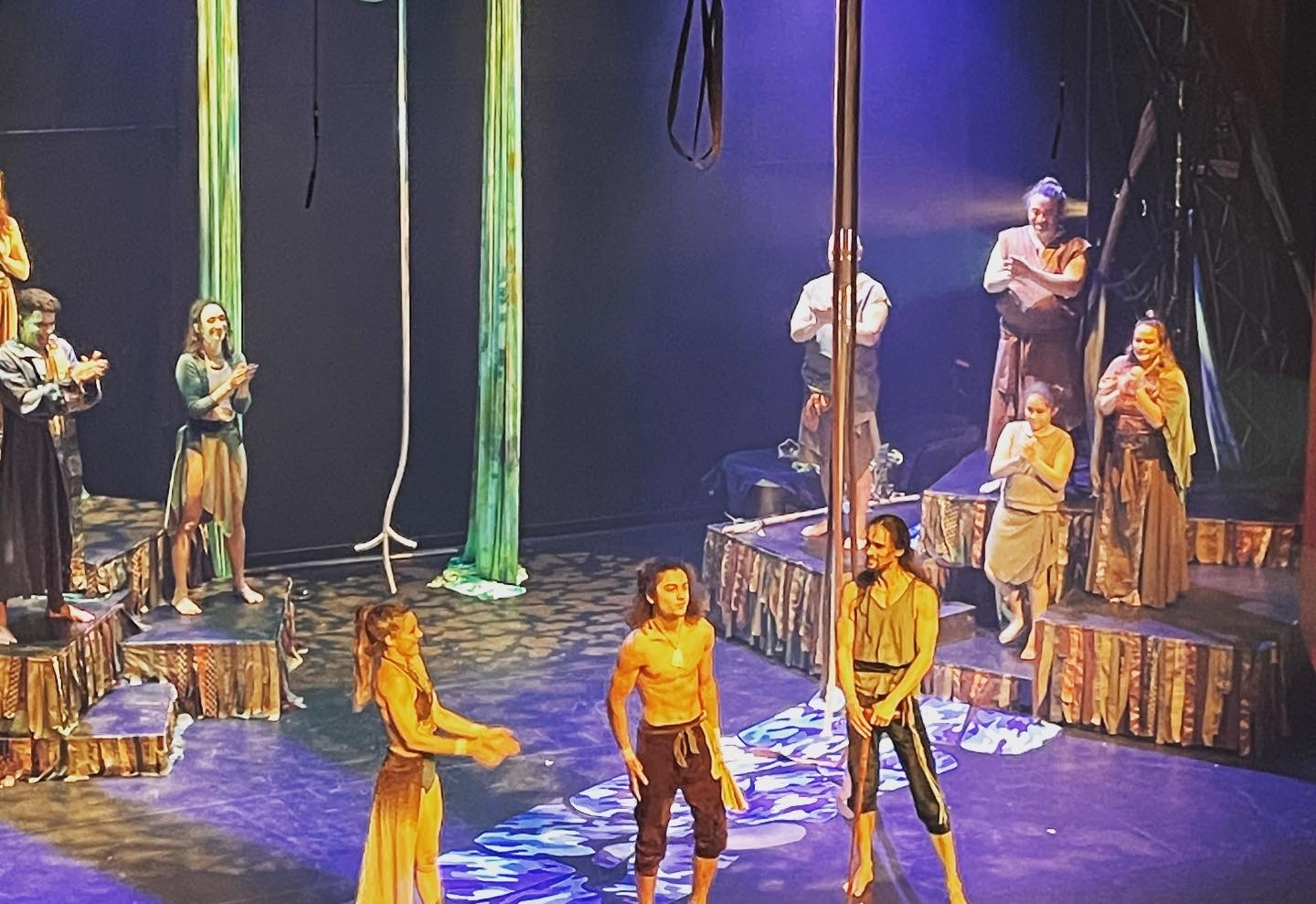The world premiere of “Te Tangi a te Tūī” at the York Theatre on October 19th was an unforgettable experience. This Indigenous language and oral storytelling-driven circus-theatre piece, commissioned by The Cultch and Urban Ink, left a profound impact. It successfully blended artistry, culture, and an emotional narrative.
The show felt raw, true, and divine, evoking a sense of authenticity that resonated deeply with me. The acrobatics and circus performances were awe-inspiring, showcasing the incredible talents of the cast. Learning that The Cultch had commissioned this production added another layer of appreciation for the show’s commitment to promoting Indigenous culture.
“Te Tangi a te Tūī” beautifully wove together Māori language and traditional knowledge to tell a multigenerational story set in the forest, highlighting the significance of ancestral lands and measuring time by age of the river. The use of stunning visuals, acrobatics, and aerial silk routines, combined with a blend of cultural and contemporary dance, enriched the storytelling experience.
The central character, an acrobat who seamlessly merged her acrobatic feats with the Māori language and character portrayal, was a standout, captivating the audience – or at least me. She, along with the opening remark’s land acknowledgement, transported me to a place of deep connection with the Earth, emphasizing the importance of appreciating its beauty and value.
The show skillfully addressed the impact of colonialism on Indigenous communities, offering a message of moving forward and healing. “Te Tangi a te Tūī” was more than a performance; it was a powerful celebration of Indigenous culture and a testament to the resilience of Indigenous communities.
Funny enough, but on the Saturday of that same week – after calling Vancouver home for the past 15 years – we had booked and finally decided to go onto one of the Vancouver Walking’s tours and embarked on the “Dark Secrets of Stanley Park Tour”. Well, the tour was also an exploration of Indigenous journey but not from New Zealand this time but those who were right here, in Vancouver. The tour delved into the history and heritage of the Musqueam, Squamish, and Tsleil-Waututh peoples who had occupied Stanley Park for thousands of years. While we had some knowledge of the background, the tour provided us with a comprehensive understanding of the timeline of events and an opportunity to see historical images.
My cultural outings last week were undoubtedly educational, shedding light on the Indigenous communities that have shaped the world, and it’s incredibly fulfilling to have gained a deeper appreciation for the rich tapestry of stories and cultures.
*side note on the tour for those who want to know 5 of the fascinating facts we learn:
- Lord Stanley was the one naming the park after himself shortly after being appointed as Governor General.
- Vancouver once had a zoo right within Stanley Park, housing four polar bears.
- The naval island located just off the Vancouver seawall goes by the ominous name “Deadman’s Island” because it’s full of dead bodies.
- The Canadian Pacific Railway actually made its fortune through real estate ventures rather than its intended purpose of transportation.
- The explorer George Vancouver named after himself Vancouver Island and not Vancouver.






